
ICCROM_ICS03_ReligiousHeritage_en
.pdf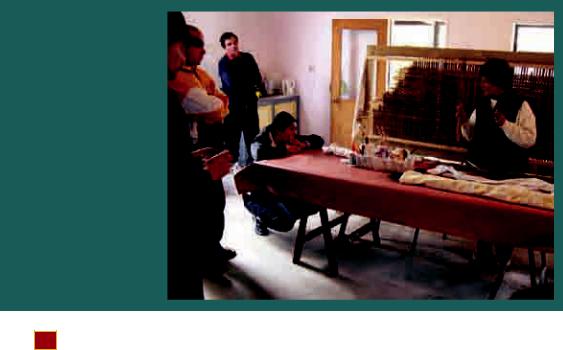
in the late nineteenth and early twentieth centuries. These movements were a reaction to the diminishing rights and control Maori had over their land and resources, and helped to unify Maori in the face of the flood of settlers from Europe. This change in social structure led to the rapid creation of new art forms and new meeting-house styles to support the many and varied needs of these new groupings. The traditional art forms were transformed in some instances to become more accessible and relevant to current issues and social climate. The highly structured and ritualised art forms such as carving gave way to more collectively produced art forms such as tukutuku (woven latticework) and painted artwork.
Today there are over one thousand marae in active use throughout New Zealand, most of which contain meeting-houses and associated support buildings. Over half of the marae were built between 1880 and the 1950s. Marae are still being built today, or redeveloped, to support the needs of the many individual sub tribes (hapu). Generally, each marae represents a sub-tribal unit of 100–2,000 people. There are larger marae that service the requirements of the whole tribe, iwi. These often contain much larger buildings within a central location. Marae land on which meeting-houses stand is usually designated as a Maori Reservation, a piece of land set aside by the tribe for the purposes of a marae. It is common land for those affiliated with the tribe and termed their turangawaewae, standing place.
Guardians of Cultural Heritage
– Kaitiaki
In preserving Maori built heritage, it is important to recognise Maori for their role as guardians
Figure 2 Cleaning work on wall tukutuku panels, Rongopai
Marae
(kaitiaki or hunga tiaki) of their cultural heritage. For Maori are tied by their ancestral obligations to protect and sustain the cultural and spiritual values of these buildings and places, as these have been handed down by their ancestors. This guardianship role can translate into the physical preservation of built heritage, but more so into the preservation of the spiritual essence of the place and structure, and the maintenance of its mana (or strength and integrity). The tapu, or sacredness of the building and site, is a cultural state that protects the spiritual values of the place. Depending on the occasion, on the people and their relationship to the tribe, and their gender and age, prayers, karakia, and rituals will be observed to ensure that the intended activity or occasion can be carried out unhindered, and that those involved are protected and nurtured. The meeting-house is configured through ritual to accommodate the changing circumstances and activity. This work demands specialist knowledge, experience, and status, to ensure proper customary process is observed. Tribal elders, kaumatua, and priests, tohunga, provide guidance and leadership in these matters, and a balance between sustaining tradition and facilitating change.
Traditional repair and renewal practice
Traditional repair and renewal practices are centred on the continuation of the arts and cultural practices. Meeting-houses were, and are, built to be durable and of benefit to the present and future generations through repair and renewal practices. They had to adapt over time to the changing needs of the tribe, through additions and alterations, to provide
new or expanded functions. Many meeting-houses show these phases of change: earth floors are changed to timber floors, timber frame structures placed over older traditional structures, and thatching replaced by iron roofing. Change and adaptation is also a feature of the artwork and decoration elements. Through repair and renewal, new materials and techniques were introduced, and new ideas and expressions added through additional artworks such as tukutuku (woven lattice-work), carving, and painted work to give depth or reflect changes in the tribes’ social state. In some parts of the country, the older houses
14 Conservation of Living Religious Heritage
are plain structures with little decoration. They could have been built when limited resources did not allow for a fully-carved house, or religious influence may not have allowed carvings to be displayed. These houses often change as resources become available, or there is a shift back to revitalising identity through artistic expression.
Throughout this progression, adaptation, and change, the meeting-house is viewed as the carrier of cultural and spiritual values that have been passed from distant ancestors to the present. Even if the house has little of the original structure remaining, the mauri (life spirit), the history and mana (integrity) have been transferred unbroken through ritual and ceremony. The important feature is that the renewal is seen as an opportunity for application and practice of traditional arts and knowledge. There are also examples where the original building was intended as a temporary structure to provide the functional capacity until a more elaborate and larger structure could be built.
It can be difficult to apply conservation processes when many of the buildings are living structures that are in a constant process of change. Conservation work can be seen as an intrusion on a cultural practice, lessening the role of traditional carvers and weavers. However, it is important that the traditional owners of marae have knowledge of the options for retaining a building, and can make decisions based on all appropriate information. The opportunity should be taken more often to strengthen the relationship between the traditional arts, such as carving, weaving, and painting, and conservation practice, so that the two perspectives on retaining cultural and spiritual values of a place become complementary.
Conservation practice
Conservation practice on Maori built heritage has been active for over 30 years. Initially, there was a period of debate on the application of conservation and its relevance to Maori. While the general notion of restoring and preserving Maori cultural material was not new, it was different in that the approach was built on a scientific basis and originated from non-Maori sources.
Institutional conservation practice emphasised retention of the material information–the tangible elements held in the structure such as paint layers and tooling marks–as evidence of history. These values were applied by conservators whose experience came from working with collections within institutions, not with communities whose built heritage expressed ancestral connections and identity. The conservation profession was growing up in New Zealand at the time, trying to find a place
within institutions, and asserting its professionalism in the heritage sector. Conservators believed that they were the object’s advocates and guardians. While this approach had its place within institutions, the reality of working within Maori communities required a different one.
Many Maori were suspicious of outside intervention, particularly when it involved their cultural heritage. The difference in values and approach could at times create unease between conservation professionals and Maori. Even quite ordinary conservation practices could appear to be insensitive. Museum conservators, for example, would often hand out white cotton gloves and insist that they be worn to protect the treasures from hand oils and related acidity when handling. For Maori visiting their most important ancestral treasure, this practice was at odds with their desire to connect with their ancestor by touching and rubbing. The fact that many of these treasures had been kept and looked after by Maori families over centuries before coming to the museum did not at times deter museum staff from insisting on using gloves. The conservator would often quote scientific reasoning for this approach, without thinking that it was degrading the relationship between Maori and their treasure, an intangible value fundamental to its meaning and integrity. Maori had become polluters of their own cultural property. Conservators needed to understand that the intangible dimension was as an important consideration as humidity, light and handling practices. Allowing a group to handle their treasure was not a compromise, but a valuable interaction that added to the meaning and integrity of the object. The perceived damage caused by handling was more often insignificant, and was an aspect that required management rather than a blanket policy of no touching.
In Maori communities conservators found it difficult to gain acceptance and soon learned that they had to recognise the relationship Maori had to their marae, arts and land-based heritage. Maori were guardians of their own cultural heritage, and had their own systems of decision-making, values and processes. Outside of the institutions, the ownership and management of Maori built heritage is essentially in Maori control. For any conservation programme to be relevant, the approach had to adapt and change to fit a Maori structure rather than the reverse.
An example of this shift was the traditional renewal practice of over-painted carvings and painted artwork. Maori would express the importance of visual uniformity in the building to allow spiritual entities to move through the structure unhindered. Conservators needed to carry out more restorative work in such a way that the meeting-house was
1 • Conserving built heritage in Maori communities |
15 |
|
|

presented in its best possible condition, while still allowing these spiritual forces to move freely within the structure. Treatments that could protect the original artwork with barrier layers, while allowing new work to be placed over the top, were successfully used on many marae.
It was not until later on, when Maori themselves were trained as conservation professionals, that conservation work found wider acceptance. In the mid to late 1980s, the New Zealand government financed the training of Maori in conservation through participation in the University of Canberra conservation course in Australia. Five Maori conservators were trained: two in the area of built heritage, and three others to work in museum institutions. The latter were given post-internship training and were subsequently employed by the New Zealand Historic Places Trust. It became increasingly important that Maori conservation practice developed in its own right and, more importantly, was led by Maori themselves. The ICOMOS New Zealand Charter for the Conservation of Places of Cultural Heritage Value, established during this period, reflects the different value system of Maori, whereby they had control over their cultural heritage.
Cultural safety
One issue of concern is the cultural safety of people working in the field. The term ‘cultural safety’ was first used in New Zealand in the health sector to promote cultural and spiritual understanding of Maori patients and medical practitioners. This holistic approach was developed not only to heal the body but also to show an awareness that medical practices can affect the soul and spiritual well-being of a patient in both a positive and negative way. There is a strong parallel with the preservation of cultural heritage. The spiritual safety of Maori working is important to ensure that people are not put in positions of risk. Meeting-houses are at the core of Maori cultural identity and belief, and working on such places requires sensitivity towards the intangible values as well as knowledge of the protocols and customs that surround the building and site. Spiritual elements are not always positive and, without depth of understanding or support, a person can get into difficulties. The intangible values of a place may even be compromised or damaged, and the burden and stress of having broken the sacredness can be devastating on a personal level.
Institutions developing Maori professionals need the support of tribal elders and tohunga to ensure that they are working in a culturally safe manner. It is unfair to expect such people to meet the expectations of both parties when they are caught between
the values of the organisation they work for and the values that their own people uphold. Heritage organisations need to understand the personal cultural risks that professionals and workers are sometimes exposed to, and ensure that they have access to tribal or religious leaders for guidance and support in their work. This issue reinforces the need for more Maori conservation professionals working within tribal organizations and structures. This would develop more tribe-specific conservation practices and support systems to ensure that local needs are met by local solutions.
Rongopai Wharenui, Waituhi, Gisborne District, New Zealand: a case study
The prophet and leader Te Kooti emerged in the 1860s as a powerful and charismatic leader of the Ringatu Faith, a variant of the Old Testament with a strong affinity to traditional Maori belief systems. It became an important political movement and attempted to turn the tide of land acquisitions and the erosion of Maori rights at the time. Many tribes supported his movement and built meeting-houses as places where his teachings were upheld. The meetinghouses of the Ringatu Faith are distinctive in their style and expression. They extensively used colour from newly acquired European paints, which shifted the emphasis from the carved to the painted art form. This was an important evolution and adaptation of Maori art: it provided a more flexible and expressive medium for the artist; one that was not so restricted as traditional carving conventions. Designs, which depicted natural forms, plants, places, people, rather than the more abstract style of traditional carvings, were all elements that made Ringatu houses distinctive and recognisable.
Rongopai represents the crossover of traditional Maori belief and the rise of new religious orders by Maori in New Zealand. Rongopai was certainly an expression of this, and was built to honour the anticipated return of Te Kooti to his home area in 1889. The building was started in 1888 under the direction of Wi Pere, Minister of Parliament for the Eastern Maori at the time. It was said to have been completed with great speed in three months, with the construction involving at times up to 500 people. It was one of four houses built for Te Kooti, and was named following the expression used by Te Kooti: Kei to pai, hoki atu ki te Kainga, Whakahauingia te rongopai i runga i te aroha me te ngawari (Go home and build the gospel on love and charity). However, the houses were never visited by Te Kooti, as nervous European settlers successfully lobbied the government to stop his return to the area.
16 Conservation of Living Religious Heritage
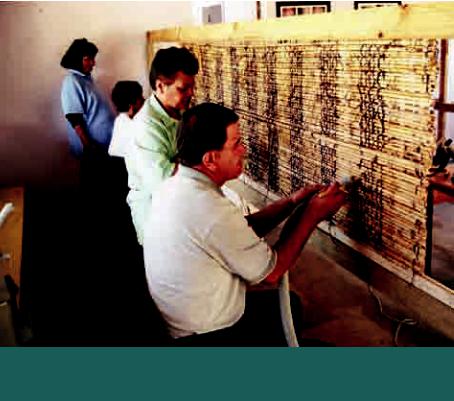
Figure 3 Teaching conservation treatment to Maori arts course students, Rongopai Marae
The meeting-house continues today as an important Ringatu house and has regular services. The building is not only a functioning cultural and spiritual building for followers of the faith, but it also represents the ancestral connections for the tribe of Te Whanau a Kai. It therefore has the duality of being a place of worship, and a place where there is a strong connection with the teachings of Te Kooti and genealogical connections to Whanau-a-Kai ancestors.
Important early conservation work was carried out on Rongopai in the 1970s. It was one of the first large-scale conservation projects on a meetinghouse. Initial discussions with the Auckland Museum suggested that the building should be dismantled and removed to the museum for preservation. However, the marae elders requested that the work should be undertaken on the marae. The museum viewed the building as an object of the past, while the Maori community saw it as an opportunity to revive and bring life back into the building once again. The New Zealand Historic Places Trust provided the services of a painting conservator from the Dunedin Art Gallery to work with the marae community on the project. The conservator was employed to restore the painted artwork within the building and recover early images of nineteenth century painted art that had been overpainted and concealed on the interior wall uprights. The project was set up as a series of
training workshops where local people were taught the skills necessary for the conservation work. The project was successful and helped establish the New Zealand Historic Places Trust Marae Conservation Programme. However, local Maori expectations were for the meeting-house to be restored and the artwork renewed to give Rongopai the mana (pride) that it deserved. Presenting the meeting-house in its deteriorated state was certainly not an acceptable outcome and the interior was overpainted.
During the last 30 years, Rongopai has also undergone a series of changes and adaptations that highlight the different approaches taken to its preservation and the need for the building to continue serving its people. Deteriorated sidewall panels of woven lattice (tukutuku) were replaced in the 1980s with copies. The whole porch area was extended to make it more comfortable for people during the funeral ceremonies that take place there. A door was also cut through to a new ablution block to allow old people easier access to these facilities when staying at the marae. These adaptations and changes were undertaken by the marae community to ensure that the building remained functional in their day-to-day lives, and they demonstrate the underlying strength of its relationship with its own people.
The current conservation project at Rongopai is to conserve the remaining original woven panels, tukutuku, on the front and back walls. The approach used has been to retain as much of the original fabric as possible, and to repair losses with a combination of conservation treatment and traditional weaving techniques. An expert Maori weaver leads the project work, with the support of a New Zealand Historic Places Trust conservator to develop and teach treatment processes. The approach allows a balance between the traditional arts and conservation practice.
A major achievement for the project is that the leaders and experts for the project have been found from within the tribe. It is important from a cultural viewpoint that leadership and expertise is developed in this way so that the role of guardianship and the authority of decision-making are retained by the tribe. Because of the important spiritual nature of the building, the tribe has ensured that the proper customary ritual has been performed to allow work to proceed unhindered.
One of the interesting and significant outcomes for the weavers is the knowledge gained about the early methods of weaving used on these tukutuku panels, which has bridged a 120-year gap in traditional weaving knowledge. Other marae also benefit from the experiences of this project. The knowledge that has been gained will be utilized in related
1 • Conserving built heritage in Maori communities |
17 |
|
|

marae projects to ensure that traditional knowledge is retained and re-taught. this ensures the retention of tukutuku weaving and strengthens similar conservation projects by developing a growing pool of skills in the area. there is also a better understanding and awareness of the conservation process, which will assist in the maintenance of these places in the future.
summary
today there are more Maori considering a professional career in conservation to meet a growing demand. the conservation of Maori cultural material has found a degree of acceptance and relevance that will continue as long as Maori have a role in the development, decision-making, and implementation of the work. While progress has been made in training some Maori professionals through institutions, more support and guidance is needed from Maori communities to ensure that they are prepared to work in areas that are potentially sensitive, and even risky from the perspective of cultural safety. technical conservation knowledge is not enough to deal with the complexities of recognising and maintaining the cultural and spiritual values of a site or place. emphasis should be placed on developing conservation positions within tribal frameworks so that these support systems are embedded
Rongopai is also a good example of the issues often faced by Maori communities, which must balance responsibilities as guardians of their cultural heritage against the needs of the current generation. It also highlights some of the small but successful steps taken to bring traditional artists and conservators together. Important synergies must be strengthened between the arts and conservation so that more collaborative partnerships evolve to retain these buildings and their associated art forms. It is hoped that in the future more leadership will come from within Maoridom to develop conservation programmes through tribal frameworks, so that conservation practice will be supported from a Maori cultural base.
Bibliography
Clavir, M. (2002), Preserving what is valued: museums, conservation, and first nations (Vancouver, Canada: University of British Columbia Press).
ICOMOS New zealand (1992), Charter for the Conservation of Places of Cultural Heritage Value. http://www.icomos.org/ nz_92charter.html. Accessed 5 January 2005.
Lloyd, L.C. (1977), Restoration of painted, carved and other decorated surfaces in Maori meeting houses (Wellington, New zealand: Historic Places trust).
Mead, H.M. (2003), Tikanga Maori: Living by Maori values
(Wellington, New zealand: Huia Publishers).
Neich, R. (1993), Painted histories: early Maori figurative painting (Auckland, New zealand: Auckland University Press).
Peters, k.M. (1981), ‘the conservation of a living artefact – a Maori meeting house at Makahae. A preliminary report’,
ICOM committee for conservation. 6th triennial meeting, Ottawa, 21-25 September 1981. Preprints (Paris: ICOM).
tamepo, e. (1995), ‘Maori authenticity and cultural diversity in New zealand (Aotearoa)’, Nara Conference on authenticity in relation to the World Heritage Convention: Nara, Japan, 1-6 November 1994. Proceedings (Agency for Cultural Affairs, tokyo, Japan: tapir Publisher).
18 conservaTion of living religious heriTage
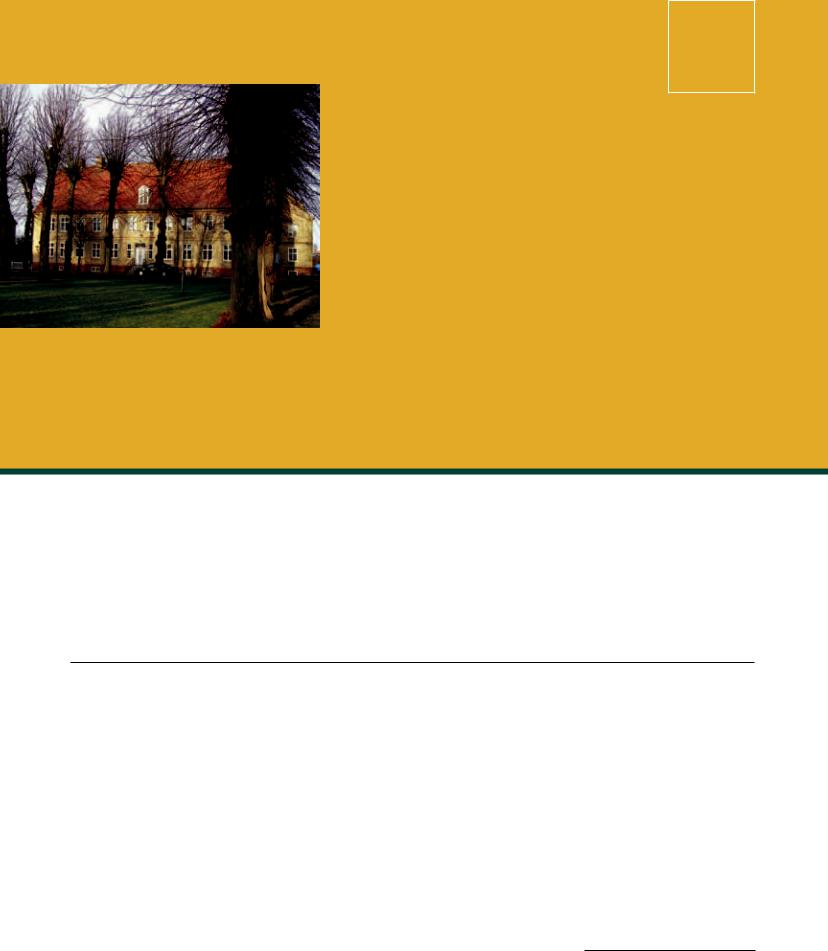
2
[christiansfeld, a late eighteenth century Moravian settlement in Denmark,was established
according to a distinctive urban plan, regarded as the ideal plan for Moravian communities. The urban structure includes several community buildings such as thesaal, and the gemeinhäuser or gemeinlogi. The contemporary utilization of these buildings is considered in this paper, with the aim of reconciling their traditional religious purpose with modern community needs, particularly economic ones. This paper attempts to identify possibilities and strategies to preservechristiansfeld’s physical
structures as well as the integral intangible values of the settlement.in this regard the author states that the best way to preserve both is to keep the responsibility in the hands of those who built the settlement i.e. the Moravian church community. The community has the ability to foster a dialogue between different stakeholders, create awareness and understanding of the religious and cultural values of the settlement, and to gain funding and political support.
[JøRgen bøytleR]
Christiansfeld: a religious heritage alive and well
tWenty-FIRst CentuRy InFluenCes On a late eIghteenth-eaRly nIneteenth CentuRy MORavIan settleMent In denMaRK
This paper will deal specifically with the case of the Moravian religious settlement in Christiansfeld, Denmark, which was founded on 1 April 1773. the paper’s
focus is the current utilization of some of the larger buildings and town squares in the settlement. the paper shows how the Moravians and their cultural heritage are under pressure from economic, political and social forces, bearing in mind that the Moravians themselves are an integrated part of a twentyfirst century society. Published and unpublished documents, from Christiansfeld and elsewhere, and including the author’s previous publications, are the primary source materials (see the bibliography
below). the Christiansfeld settlement is used as a case study, with arguments in the paper based on visible and historically documented facts, well-described religious and cultural values, and the accumulated experience of the settlement. A case study approach moves from the particular to the general, but to counteract this weakness the paper will also look at how general theories apply to the particular case of Christiansfeld. the limited length of this paper is a constraint, and further studies in the subject may be necessary in order to deliver a full argument.
As the author is working as the minister (pastor) for the Moravian Congregation in Christiansfeld and
(abOve) FIguRe 1 the sisters’ house
Christiansfeld: a religious heritage alive and well |
19 |
|
|
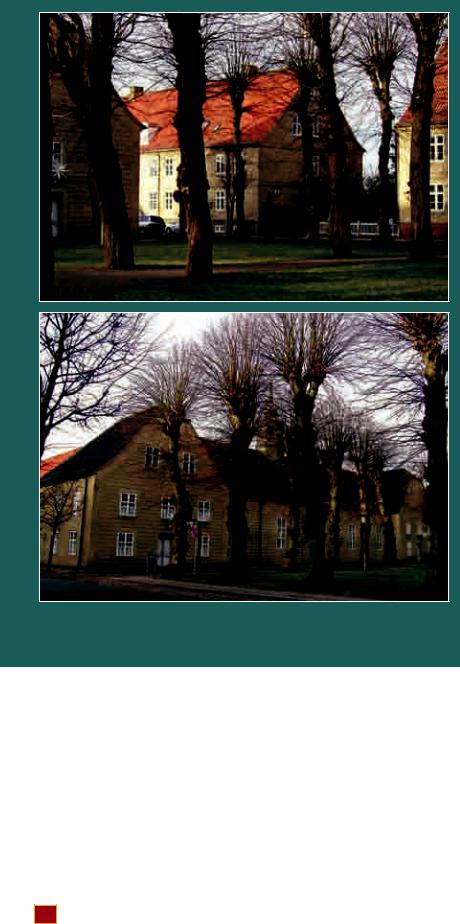
Figure 2 From the church square. On the left the Saal, in the centre the Widows' House, and on the right the Sisters’ House.
Figure 3 The Saal on the church square.
is chairing the Steering Committee of a renovation project for the settlement, he is part of the situation being studied. Hence his objectivity should be scrutinized. Having said this, the author will build his arguments on commonly agreed sources, whenever applicable. The key issue in the paper is to identify and describe how the settlement can maintain and develop its tangible heritage structures and related intangible values in the present context. The solution proposed is that the best way of preserving the settlement is to keep the responsibility for the property in the hands of those who built the settlement, i.e. the Moravian Church.
The Moravian Church, history and development
The origins of the Moravian Church go back to 1457 when a pre-Reformation church was founded in Bohemia and Moravia, in the present Czech Republic. The church was based on the teachings of John Huss and founded in reaction to the Roman Catholic Church, especially to its heretical teachings and practices. The original Moravian Church survived for a couple of centuries in Central Europe, but by the end of the Thirty Years’ War (1618–48) was almost extinguished when the principle of cujus regio ejus religio (whose rule, his religion) was enforced.
The Moravian Church in its present form developed around 1720 when the settlement of Herrnhut in the Kingdom of Saxony was founded, under the patronage of Count Zinzendorf. The vision of Zinzendorf was to establish a village as an ecclesiola in ecclesia (a church within the Church). The basic theology was influenced by the European reformers, especially Martin Luther, and by the pietistic movement common in Northern Europe at that time. Herrnhut was the first Moravian community, and notably the concept of congregational life developed simultaneously with the town.
The congregation was divided into ‘choirs.’ A member of the congregation belonged to a choir according to his or her age, gender and martial status. Unmarried sisters, unmarried brothers and widows lived a communal life in ‘choir houses’, while married couples and children lived in private houses. The choir houses are characteristic of all Moravian settlements. Life in the settlement was focused on the church where the congregation would meet several times a week, and sometimes several times a day. The choir houses contained Saals, large rooms designed to serve as the church for that particular choir.
The Moravian Church subsequently spread worldwide. During the eighteenth century, settlements were founded in Germany, Holland, Denmark, North America, and South Africa. Remains of Moravian settlements have also been found in Western Russia, the West Indies and Greenland.
Today, the Moravian Church has 800,000 members, mainly in Africa, the Caribbean and Central America, but as the Moravian Church no longer founds settlements, most members today have no experience of the Moravian settlement pattern.
Principles behind a Moravian settlement
The people living in the first Moravian community at Herrnhut lived under strict rule. The village itself operated on a communal basis. Each person contributed to the welfare of all, and each received
20 Conservation of Living Religious Heritage
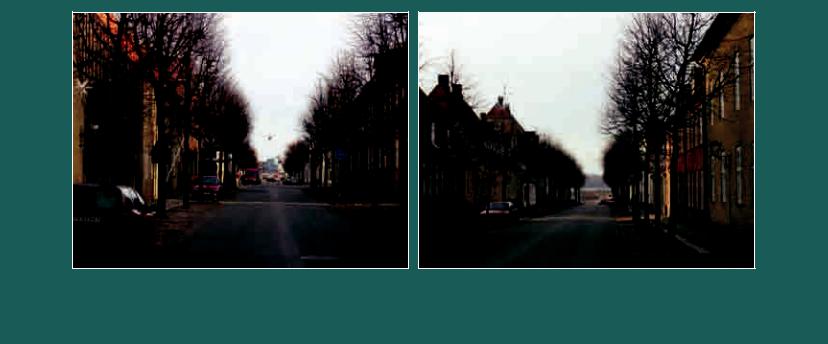
according to his or her need. There was no competition in business, and the congregation owned and controlled all the resources of the community. Crafts and industry were carried on within the village, and many Moravians were noted artisans. Discipline, order, control and piety were decisive factors in designing and constructing not only Herrnhut, but many of the other towns as well, which were often built in a relatively short time. This was a new and very practical way of interpreting praxis pietas. The economy of the settlements as a whole was built on agriculture, industry, building construction and trade. Businesses were controlled by the Elders who, by granting permissions to individuals and choirs, secured the variety of craft and industries necessary to supply what the inhabitants needed.
An ecclesiastical theology developed that formed the basis for the congregational practices and the buildings. A key factor in understanding the layout of a Moravian settlement is the idea of the Christian pilgrim (or wanderer), dedicated to serving where and when the church, or in this case, the Board of Elders, wishes. In the 1740s up to one third of adult Moravians were wanderers (Schempp 1969: 39), moving between settlements and mission areas. The design of the towns and buildings had to accommodate these temporary newcomers, who were normally lodged in the Sisters’ or the Brothers’ House.
Spaces for communal activities were also required, to meet the needs of communal life. The Moravians saw themselves as proselytisers; this was the common task and the towns were constructed to
serve this purpose. Towns were designed to provide ample opportunities for effective industry and agriculture, and thus for maximum interaction with the local populations.
The philosophy of the Moravian Church, in common with many other Christian groups, includes the concept of liturgical life, namely that any work or task is a service to God. In contemporary Moravian understanding this includes supporting the church through living in consciousness of the environment and maintaining the buildings as heritage. The liturgical life is an integral part of living as a Moravian in a Moravian settlement, and can be understood as a meeting point between the spiritual and the physical life. The physical assets provide a framework for the spiritual life, and the spiritual life is revealed in a very ‘down-to-earth’ sense by working through the visible and physical structures.
The ideal plan
A perfect plan for a Moravian community can be imagined (Merian 1975: 468). It shows the centre as the square (Platz). The church hall (Saal) is situated immediately on the square, in a central place. Along with the church, and facing the square, are the congregational houses (Gemeinhäuser), with private and individual houses behind. The number of streets varies, but they should form a symmetrical pattern focused on the square. Traffic should pass by on the outskirts of the town. The choir houses should be situated according to the church, meaning the Sisters’ Houses should be close to that end of the
Figure 4 View to the east through Lindegade, one of the main streets.
Figure 5 View to the west through Lindegade. No new buildings have been allowed, and the view to the open land is intact.
2 • Christiansfeld: a religious heritage alive and well |
21 |
|
|
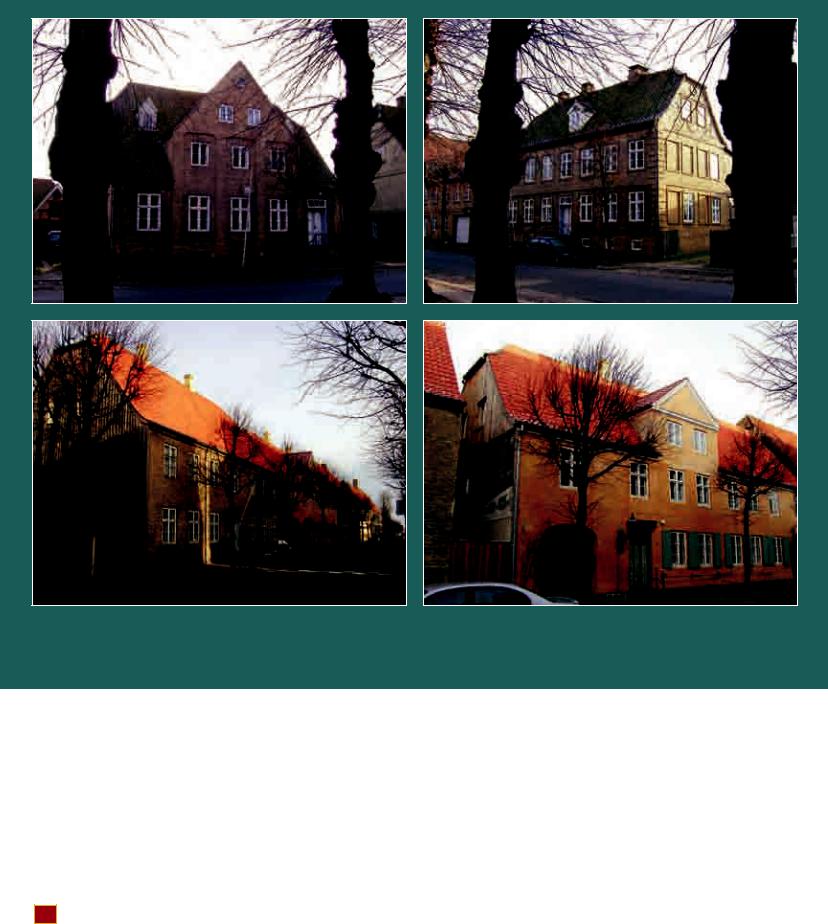
(clockwise) Figure 6 Briant’s House, the parsonage, Figure 7 Prætorius House, Figure 8 The old pharmacy store in Lindegade, with a new roof. Figure 9 Lindegade No. 19, then the pharmacy store, the Spielwerk building and the hotel.
church where the sisters sit. The inn (Gemeinlogi) should be close to the main entrance of the square on the brothers’ side. Private houses of prominent persons may be placed facing the square (Merian 1975: 467–8).
The idea of the utopian city, popular among many writers, was presented in Johann Valentin Andreae’s ‘Christianopolis,’ a utopian city. This may very well have fertilized the design of the Moravian settlements. (Bøytler 2003: 17)
The settlement at Christiansfeld
The settlement at Christiansfeld was founded in 1771. The Danish government wanted the brethren to settle there in order to bring development and prosperity to the area, while the brethren wanted a settlement as a base for their activities within Denmark.
The plan of Christiansfeld follows closely the ideal plan, although the square is not circular but square. The axis dividing the church into a sisters’ side and a brothers’ side divides the whole structure,
22 Conservation of Living Religious Heritage

making the location of the Brothers’ House, the Sisters’ House etc. obvious. the square is principally devoid of traffic, leaving space for people to meet in individual or communal circumstances. It is more than likely that the cross being formed by the pathways and the water fountain in the centre of the square carries the symbolism of Christ, being the invisible centre of the community (Bøytler 2003: 16).
The houses and squares
The saal1
the church building measures 31.2 x 15.0 m (Varming 1984: 496) and was built in 1776. It still serves as the sanctuary of the congregation. It is situated in the most prominent place on the church square. the building contains the largest open hall (without columns) in Northern europe from this period and is unique in its architectural simplicity. the architect, probably working under supervision of the Provincial Directors based in Barby, germany, is unknown. (Varming 1984: 495). It was extended to its present size in 1796. the Saal itself is painted white with hardly any decorations and through the years it has been maintained and repaired; the last major restoration took place in the 1970s.
Naturally a lot of attention is focused on this building. While the idea of using this as a sports hall was aired some years ago, few now have difficulties in understanding its religious and cultural value. Donations to the congregation made the last restoration possible and there is a strong will within the congregation to maintain the building. It strongly defines the identity of the congregation and is protected as cultural heritage, as are the other buildings described here.
The sisters’ house
this is one of the large choir houses and was the dwelling of the unmarried sisters of the congregation. It was begun in 1776 and built in phases. It was owned by the congregation. the sisters lived in the house on a communal basis, forming their own entity within the settlement. the house was meant to create income-generating activities (Høy 1956: 30). As the system of choirs was gradually abandoned, the use of the Sisters’ House changed. for a time it was a home for elderly people. Currently most of it is rented out as office space for several Danish mission societies. the Choir Saal2 in the Sisters’ House is particularly beautiful. the house is well kept and was re-roofed a decade ago.
the use of the Sisters’ House for housing offices of organizations related to church work is not without significance for the Moravian congregation,
and is well in accordance with the original intended use of the house.
The hotel
One of the four houses founded on 1 April 1773 was the gemeinlogi.3 In the ideal plan (Merian 1975: 468) the location of the gemeinlogi is mentioned. the idea of having a guesthouse in a Moravian settlement relates to the ideal of an open and inviting community, able to provide shelter for whoever might come by.
Under the present renovation programme, the continued functioning of the hotel is an important priority. the utilization of the building, the type of hotel, the groups targeted by the hotel as customers, the level of prices, and the quality of the services are all-important factors. efforts are being made to improve its chances of being economically sustainable, but complications have arisen from the congregation’s idea of how the hotel should function. the congregation’s goal is an average-priced hotel, affordable by guests coming to Christiansfeld to visit the congregation. the hotel should offer accommodation and catering, and its success should not jeopardize the economy of the congregation. this is a different model from the one proposed by the consultancy company that has been engaged to provide a sustainable business model. the hotel provides an example of an institution in which architectural, economic and cultural heritage interests collide with the convictions of the congregation.
spielwerk building
the settlement was originally served by a trading company (Gemein Laden) that provided utensils, cloth and hardware for the citizens of the settlement (engquist 1984: 446). the Spielwerk building, erected in 1778, is one of the oldest in Christiansfeld. It currently houses stores and apartments, and is typical in containing both business and private facilities. this mixed use, and the situation of the house in the centre of the business district, gives the building prominence in the town. the value of the house to the congregation is both architectural and economic. Important space for present-day stores is offered within the house. Although it has no religious value as such, it was one of the houses that underpinned the economy of the early settlement.
briant’s house
Briant’s House is one of the earliest houses constructed in the settlement. It is the parsonage and is used by the congregation as a staff house. the rent is paid by the staff living in the house. the house has significant architectural and cultural value, and a
2 • Christiansfeld: a religious heritage alive and well |
23 |
|
|
